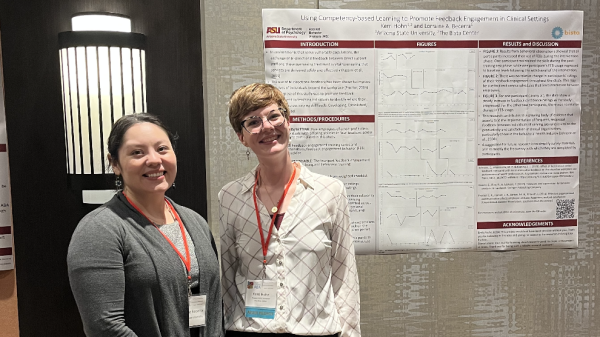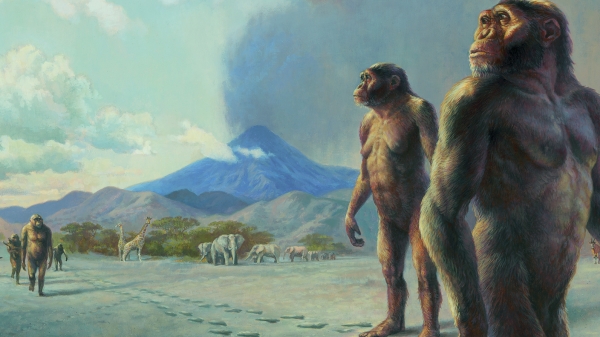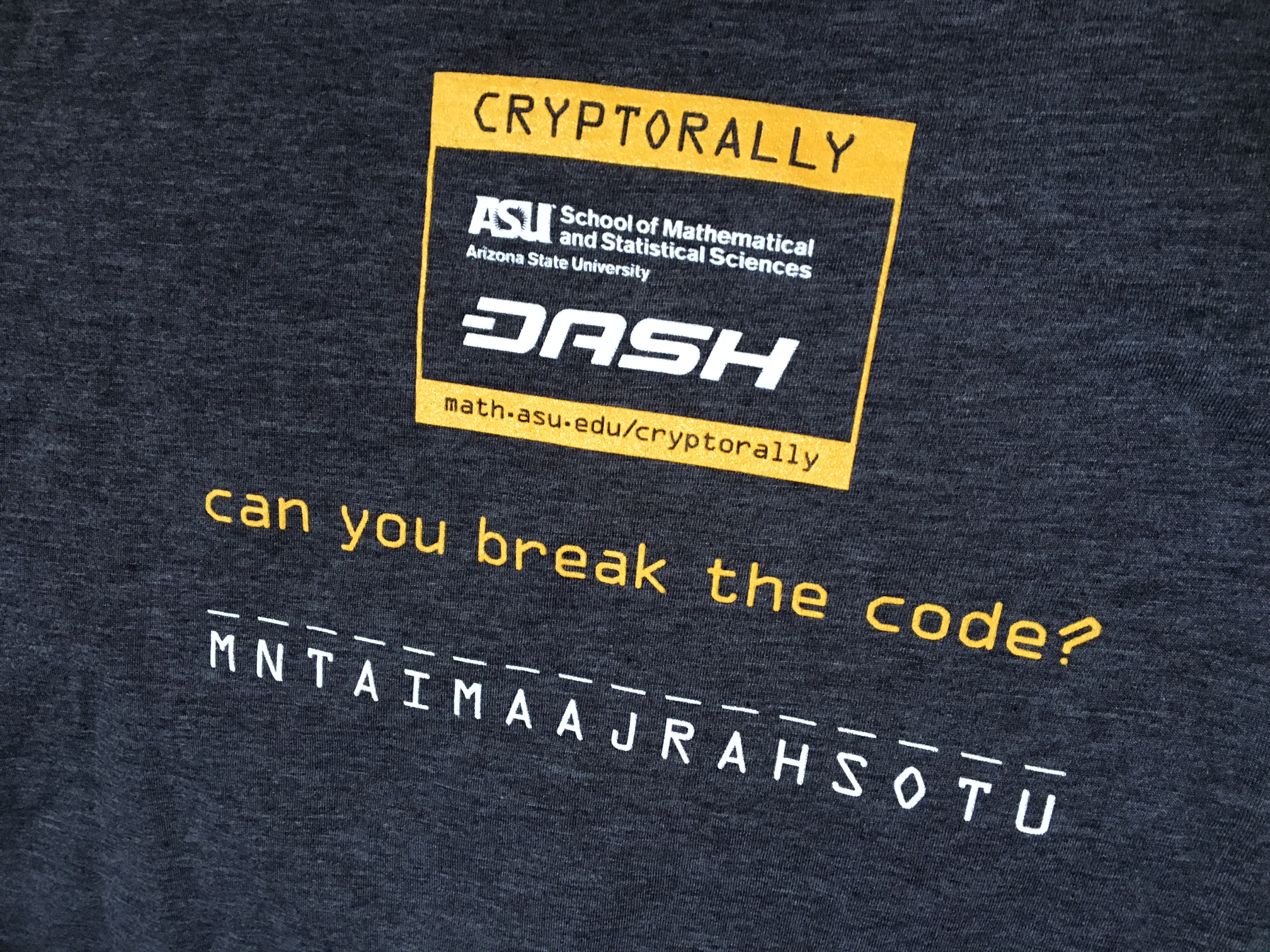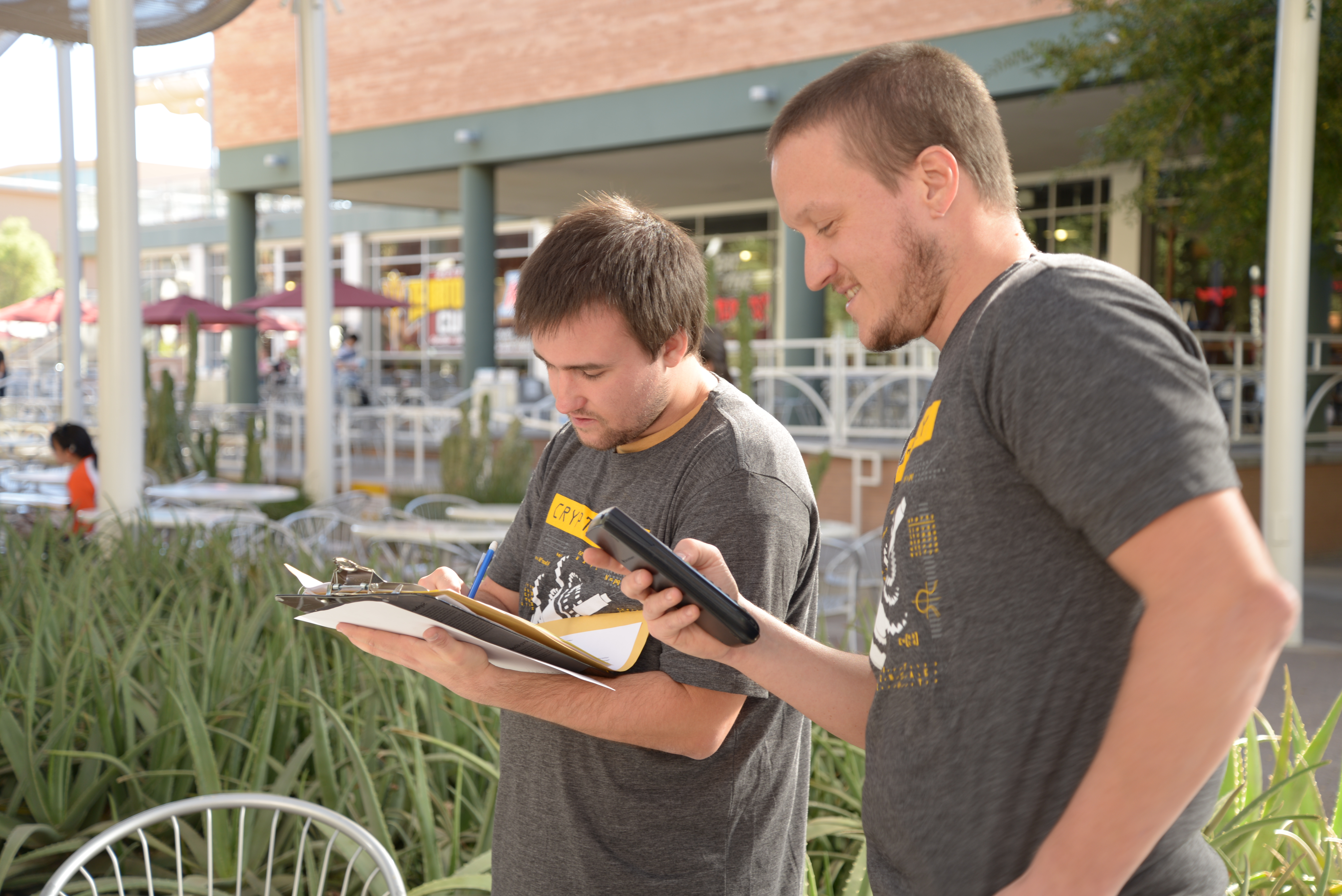ASU Cryptorally tests students' cipher-solving skills

Students dig in to solve their first cipher during the seventh annual Cryptorally on Nov. 18. Photo by Samantha Lloyd/ASU
Can you break the code?
That's the question that more than 120 students set out to answer on Nov. 18, as they teamed up to compete in the seventh annual Cryptorally at Arizona State University.
The Cryptorally is a cipherIn cryptography, a cipher is an algorithm or set of steps used in encryption or decryption of a message. It's commonly called a "code."-solving scavenger hunt competition, hosted by the School of Mathematical and Statistical Sciences. Students at the university or high school level compete solo or with a partner. They decode each cipher to reveal a clue that leads to the secret location on campus with their next cipher. Teams make their way around the ASU Tempe campus, starting in Wexler Hall and visiting Noble Library, Memorial Union, Virginia G. Piper Writers House, and even an exhibit at the ASU Art Museum.
The first team to correctly solve all the ciphers and cross the finish line this year was Jordan Miller and Blake Willoughby, both seniors at ASU. Coming in second place was a team of high school juniors, Walker Kroubalkian and Tanner Reese from University High School in Tucson. Finishing third was a solo competitor, John Conger, an ASU senior majoring in mathematics.
For Miller, this was a back-to-back win. He and a different partner came in first place last year.
“It feels great to know that the first time wasn't just a fluke and I actually know what I'm doing,” Miller said. “The first time winning (in 2016) came to me as a complete surprise considering my terrible performance the year before, and I had to make sure that it wasn't just an accident.”
Miller encourages other students to compete.
“I’ve always had a great experience with the Cryptorally, even my first time when I failed to solve the first cipher,” he said.
“It is a great team-building experience as well as a great way to get comfortable with the different ciphers,” Willoughby said. “Most importantly though, it is super fun! Who doesn't love running around campus looking for secret messages and solving them?”
This year’s Cryptorally was sponsored by Dash, a digital currency company based in Scottsdale, Arizona. Dash CEO Ryan Taylor says the Cryptorally competition is one way to develop and foster interest in this important field, and signal to the participants that these skills are important and valued.
“A competition setting helps make cryptography fun, social, exciting and challenging, attributes that young people gravitate toward,” Taylor said. “It’s great to see an organized effort to help foster interest in cryptography.”
The Cryptorally is designed by Associate Professor Nancy Childress, who teaches cryptography.
“Cryptography helps to protect personal, financial, proprietary and defense-related information. Among many other things, it is used in internet commerce and in communication devices, such as mobile phones and cable boxes,” Childress said. “Modern cryptology relies on ideas from number theory, abstract algebra and discrete mathematics.”
An example of a cipher on a Cryptorally 2017 T-shirt. Photo by Rhonda Olson/ASU
This year’s competition again included a Junior Rally division for middle school students who had been studying cryptography and practicing their deciphering skills. Eight different middle schools participated with 19 teams. Associate Professor of Mathematics Susanna Fishel, graduate student Lauren Crider and ASU graduate Andre Rouhani led after-school sessions at three local middle schools to help get the kids interested in cryptography.
After the rally competition, students and faculty attended the featured lecture delivered by Ben Livingston, a mathematician with the National Security Agency. His talk, "Alice vs Eve: A Brief History of Cryptology," took the audience on a whirlwind tour through the history of cryptology from Julius Caesar to Whitfield Diffie, with a mathematical pitstop in Bletchley Park.
The Cryptorally event included a student research poster session, which was judged by Andrew Bremner, a professor of mathematics, and Evan Dummit, a postdoctoral associate. The author of the winning poster was Kevin Lough, a dual mathematics and computer science major, who studied Improvement on Diffusion-Substitution-Based Gray Image Encryption Scheme.
The judges for the poster sessions were impressed with the high quality of the entrants' work and chose to award two honorable mentions: Rubik Cube versus Trifid authored by Blake Willoughby, and Digital Currency authored by William Dong.
The 2017 Cryptorally champions, Jordan Miller and Blake Willoughby, answered some questions about the event.
Jordan Miller (left) and Blake Willoughby crossed the line first at the 2017 Cryptorally. Photo by Samantha Lloyd/ASU
Question: How did you feel at the finish line when you realized you were the first team to arrive?
Miller: I was initially worried that we were already out of time since some of the ciphers were taking longer than expected and we made large mistakes on about four of the ones we solved. It was a relief when we were told at the second-to-last checkpoint that we were to first to pass by. It felt great being the first ones to come through. With about twice as many teams as there were last time, I was not expecting to even come in third.
Q: To what do you attribute your success in the competition?
Willoughby: I attribute our success to our teamwork primarily. We worked really well together. Also, I have to mention Jordan's calculator programs. Without them we would not have been able to be as quick as we were.
Miller: I would have to say being able to troubleshoot exactly where decryptions went wrong had saved us a lot of time, especially with the Hill cipher. There were many mistakes made throughout the competition, but they could have been much worse.
Q: What kind of preparation did you do ahead of time?
Miller: Being a part of the cryptography class helped me program the ciphers into my calculator more efficiently. I've been programming it during each new cipher so that it would be ready to tackle anything that came our way during the rally, except for Playfair, CT and Trifid, which are just much easier to do by hand.
Willoughby: To prep ahead of time I just practiced encrypting and decrypting as many ciphers as I could. It also helped that I was in Cryptography I (MAT 447).
Q: How did the two of you decide to become a team for Cryptorally?
Willoughby: Jordan and I have had a math class together since I started at ASU. We have become good friends in this time. We are in Cryptography class together this semester, so it only seemed natural we team up for this race.
Q: Which is you favorite kind of cipher to solve, and why?
Miller: I think my favorite cipher to solve would be the Trifid cipher. It can seem tedious, but the 3-D properties of the key, as well as the fun location they always choose to place it, always makes this cipher fun. Sometimes solving a cipher with pencil and paper makes it feel more personal than running it through a program, even if you're the one who made the program. Though when it comes to programmable ciphers, I prefer RSA since there are plenty of fun ways to attack it and most ways are feasible on a calculator.
Willoughby: My favorite kind of cipher to solve is the Playfair cipher. I like it because the decryption is so systematic. You get into a rhythm and the plaintext just starts pouring out.
Q: Why are activities like Cryptorally important for students to participate in?
Miller: Because they get people to see what they are capable of, as well as provide them with a great time for fun, socialization, competition and critical thinking.
Q: What do you think is misunderstood about math by the general public?
Miller: People tend to think about math as nothing more than number crunching and solving exercises with no practical purpose, but math can be much more interesting than that. Cryptography, for instance, can be used even by kids, to send secret messages to each other. None of the more interesting ciphers and cryptosystems would even be around if it weren't for math. Math should always be thought of more as a set of puzzles rather than a set of problems.
Willoughby: I think the general public feels like people who are good at math are in a secret club. They feel like you either have it or you don't. This is far from the truth. It's kind of like learning a new language. If you engulf yourself in it all the time, you can get better and gain more understanding of the language. However, the perk of learning the language of math is that it is a universal language.
Top photo: Students dig in to solve their first cipher during the seventh annual Cryptorally on Nov. 18. Photo by Samantha Lloyd/ASU
More Science and technology

Miss Arizona, computer science major wants to inspire children to combine code and creativity
Editor’s note: This story is part of a series of profiles of notable spring 2024 graduates. “It’s bittersweet.” That’s how…

ASU applied behavior analysis program recognized in Four Corners region
Helping students with learning disabilities succeed in school and modeling effective communication skills are just two examples…

50 years later, international experts discuss importance of 'Lucy' discovery at ASU symposium
“Lucy” is one of the most famous human ancestor fossils of all time. Discovered by ASU Institute of Human Origins Founding…

